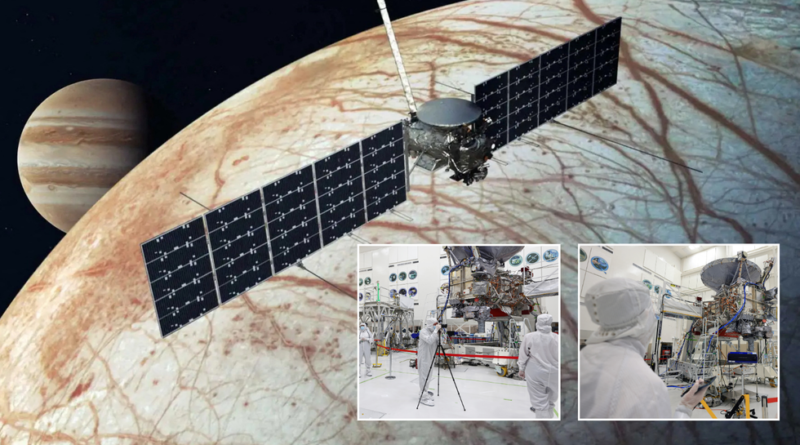Nasa mission to hunt for alien life on moon 628 million km from Earth gets underway
Nasa is set to send a spaceship to Jupiter to find out if there is alien life on a moon 628 million km away from Earth.
The US space agency’s robotic solar-powered Europa Clipper spacecraft is due to blast off from the Kennedy Space Centre in Florida at 12.06pm (local time) today.
Its destination is Europa, one of Jupiter’s 95 moons, which is thought to boat a water ocean beneath its icy surface. Scientists are hopeful that the mission will uncover information about the possibility of extraterrestrial life on the moon.
The $5billion (£3.8billion) mission is not aimed at searching for life, but rather determining whether conditions there could support it.
“There is very strong evidence that the ingredients for life exist on Europa. But we have to go there to find out,” said planetary scientist Bonnie Buratti, the mission’s deputy project scientist.
“Just to emphasise: we’re not a life-detection mission. We’re just looking for the conditions for life,” Buratti added.
The probe, carrying nine scientific instruments, will scour Europa’s surface for traces of organic compounds and gases released from the moon to analyse whether it is habitable.
“It’s a chance for us to explore not a world that might have been habitable billions of years ago, but a world that might be habitable today — right now,” said programme scientist Curt Niebur.
SPACE LATEST:
Scientists make incredible discovery of 8.5 foot long mega-millipede‘Comet of the century’ to be visible for last time tonight before disappearing for 80,000 yearsSpace breakthrough: Nasa craft receives signal from depths of the solar system
The mission will take over five years, not reaching its destination until 2030. The six-ton spacecraft will fly past Mars and swing back around Earth, using the gravity of each planet to increase its momentum like a slingshot so it can reach Jupiter.
It will chase a European mission that left in 2023, but using a cosmic piggyback, it will overtake and arrive first.
The Clipper is the biggest aircraft ever built by Nasa for a planetary mission, measuring over 100ft from one end to the other. Its humongous size is mainly due to its huge solar panels used to generate enough power to provide energy to the probe, which will venture out extremely far from the sun.
Its launch was delayed at the last minute after Hurricane Milton caused havoc across Florida last week.
“If we discover life so far away from the Sun, it would imply a separate origin of life to the Earth,” says Mark Fox-Powell, a planetary microbiologist at the Open University.
“That is hugely significant, because if that happens twice in our solar system, it could mean life is really common,” he added.
Europa has been described as an “ocean world”, and whilst its diameter is just a quarter of Earth’s, its subsurface ocean may contain twice the water in Earth’s oceans.
“As an ocean world, Europa is very intriguing. And this mission is going to help us to understand a complex piece of our solar system,” said Gina DiBraccio, acting director of Nasa’s planetary science division.
Numerous missions have been conducted over several decades to learn more about the moon, which is the sixth-largest in the Solar System.
In the 1970s, scientists first deduced that Europa could support life when they saw water ice whilst peering through a telescope in Arizona.
Voyager 1 and 2 spacecrafts captured the first close-up images, and then in 1995, Nasa’s Galileo spacecraft flew past the moon, where it took pictures which showed its surface covered in dark cracks – which scientists believe could contain salts and sulfur compounds that could support life.
Images of giant plumes of water being ejected from the surface have also been captured by the James Webb telescope.
“We are searching for the potential for habitability and you need four things – liquid water, a heat source, and organic material. Finally those three ingredients need to be stable over a long enough period of time that something can happen,” explains Michelle Dougherty, professor of space physics at Imperial College in London.

